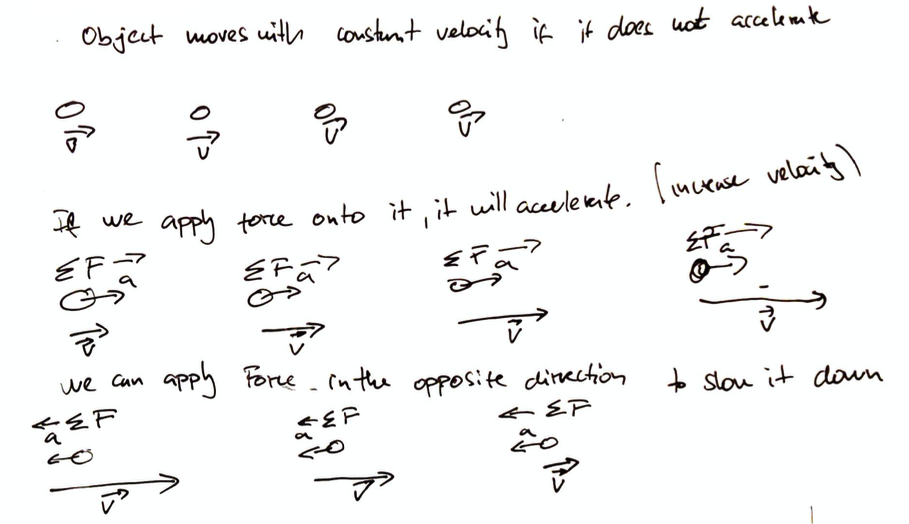Newtons Laws¶
First newtons law¶
Every object continues either at rest or in constant motion in a straight line, unless it is forced to change that state by forces acting on it.
Alternatively we can say than an object acted on by no force moves with constant velocity (maybe zero), thus with zero acceleration.
Inertia¶
It is the tendency of an object to remain at rest or to keep moving.
If we catch an base ball, it wants to keep moving.
Equilibrium (zero resultant force, no force at all)¶
An object acted on by no force, or by several forces whose vector sum is zero.
Newtons second law¶
The vector sum of all the forces acting on an object equals to object mass times it acceleration.
The units are Newton $\( 1 N = (1 kg)(1 m/s^2) \)$

If we apply Force on an object it will accelerate, the amount of acceleration depends on its mass $\( a = \frac{\sum \vec{F}}{m} \)$
An heavier object will accelerate slower than an lighter under the same force.

Mass and Weight¶
Weight is the mass of the object times acceleration due gravity. $\( w = mg \)$
m mass
\(g = -9.8m/s^2\)
Mass is the proportion of the Force required to accelerate an object:
Newtons Third Law¶
For two interacting objects, \(\vec{F}_{A \text{ on } B} = -\vec{F}_{B \text{ on } A}\). To every action there is always opposed and equal reaction.

